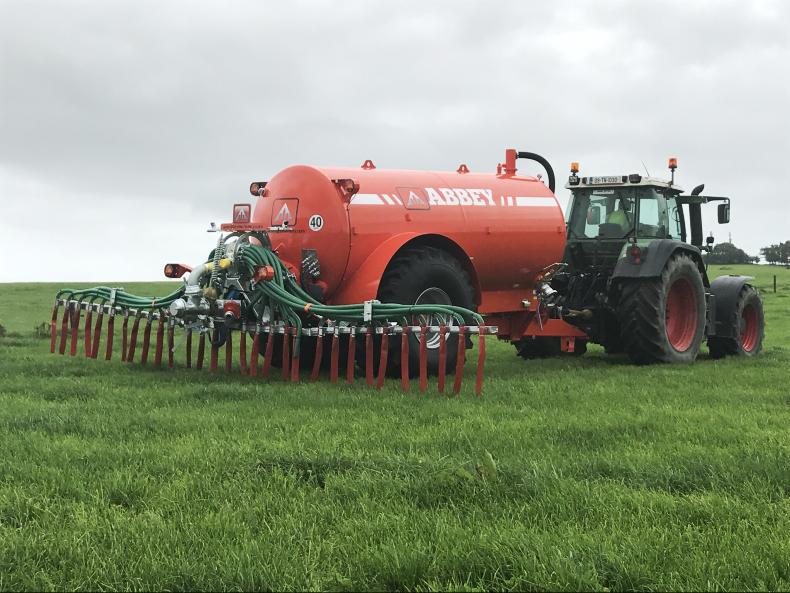Farmers who were waiting patiently for the closed period for spreading slurry to end will have been disappointed. Storm Brendan has brought high winds and high rainfall with it. It’s certainly not weather for spreading slurry.
This presents a problem for farmers with full slurry tanks. If there is capacity in the tank, all you can do is wait until the weather improves to spread slurry.
Full tanks
However, where there is no capacity in that tank then something needs to be done. Leaving the cattle in the shed with the tanks full presents an animal welfare problem, as they won’t have a dry lie.
The first action in such instances is to transfer slurry to a tank on the farm that has capacity. While the extra work involved is a nuisance, if there is capacity in another tank it makes sense to utilise it, rather than spreading in bad weather, which poses a threat of run-off and damaging soil structure.
If all tanks on the farm are full, you have a bigger problem
If all tanks on the farm are full, you have a bigger problem. There are a number of options. Neither are ideal, but something has to be done.
The first option is to spread a small quantity of slurry from the tank during a window of opportunity. Spread small quantities at a low rate on dry land that is situated away from rivers, streams and wells. Umbilical spreading machines are lighter on land than heavy slurry spreaders, so this is worth keeping in mind.
Another option is to transfer that slurry to a farmer who has spare capacity. There are no technical issues with this, provided that the farmer taking the slurry is not in a nitrates derogation and receiving the slurry won’t push him or her into a derogation. Farmers with more than 170kg of organic N/ha are supposed to be in a derogation.
Forecast
The forecast for the end of the week is more suitable for spreading, with cold and dry weather forecast for the weekend. Slurry should not be spread on frozen ground, but the air temperatures are set to be just at freezing point, so that should not be an issue.
As always, take plenty of safety precautions when agitating slurry. Always have PTO guards installed on equipment. Always empty sheds before you agitate and only agitate on a breezy day, so as to prevent a build-up of dangerous gases.
